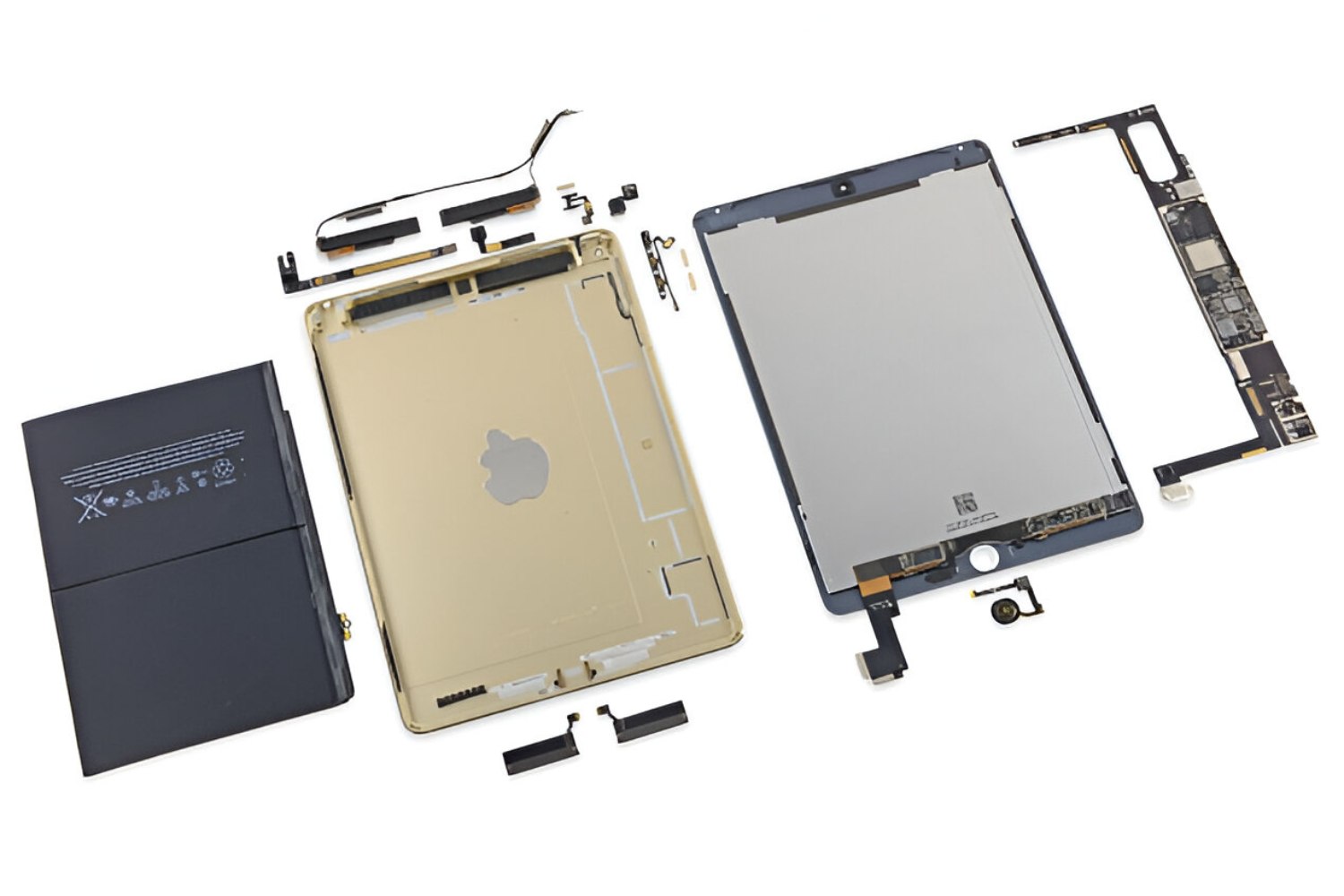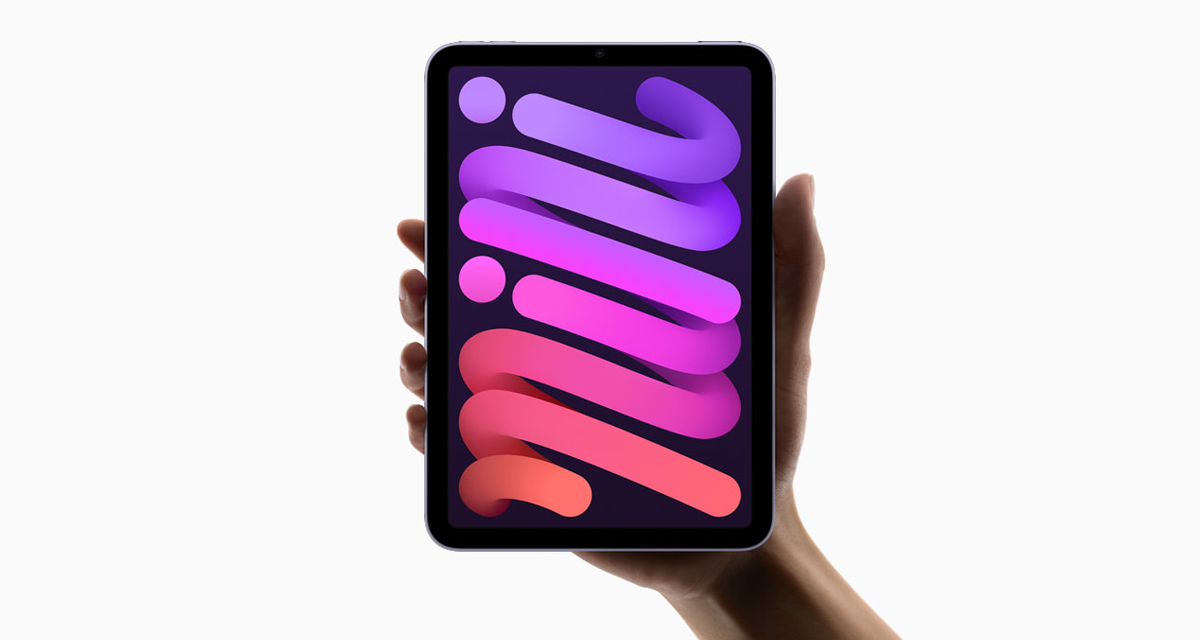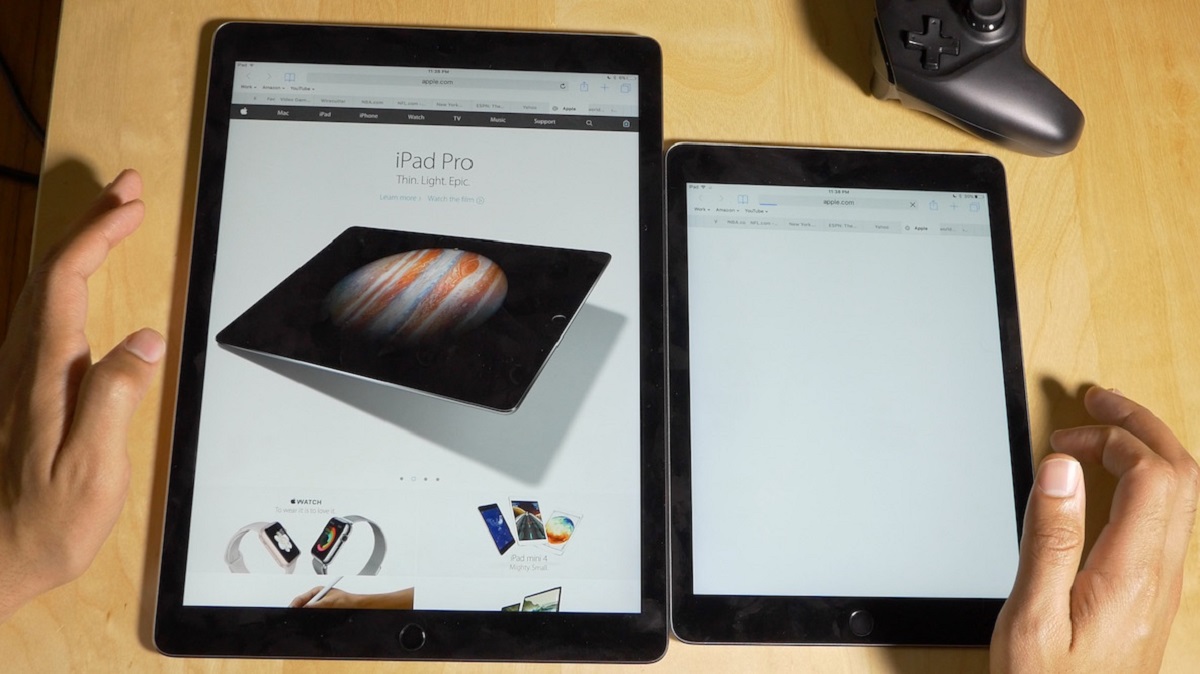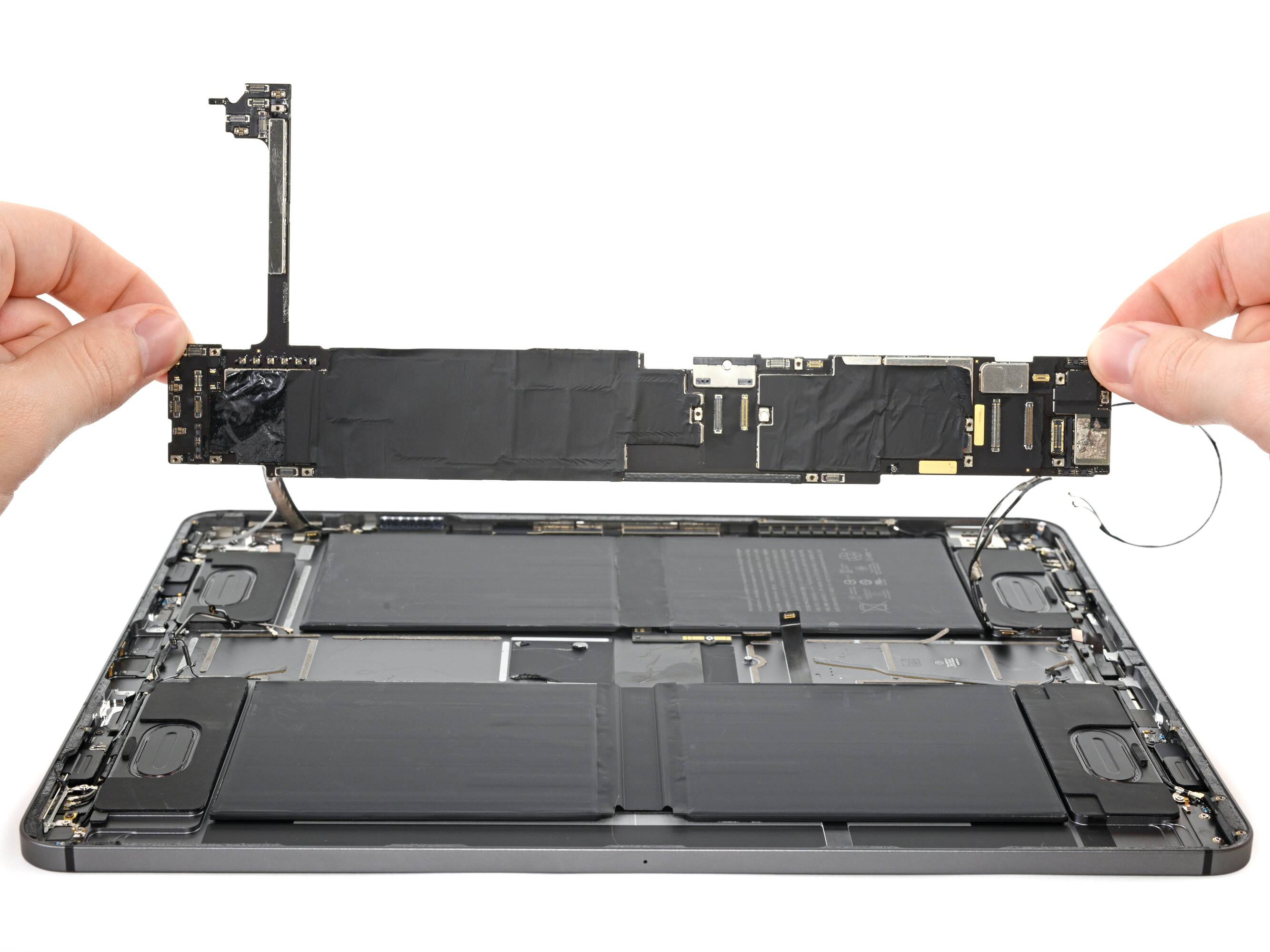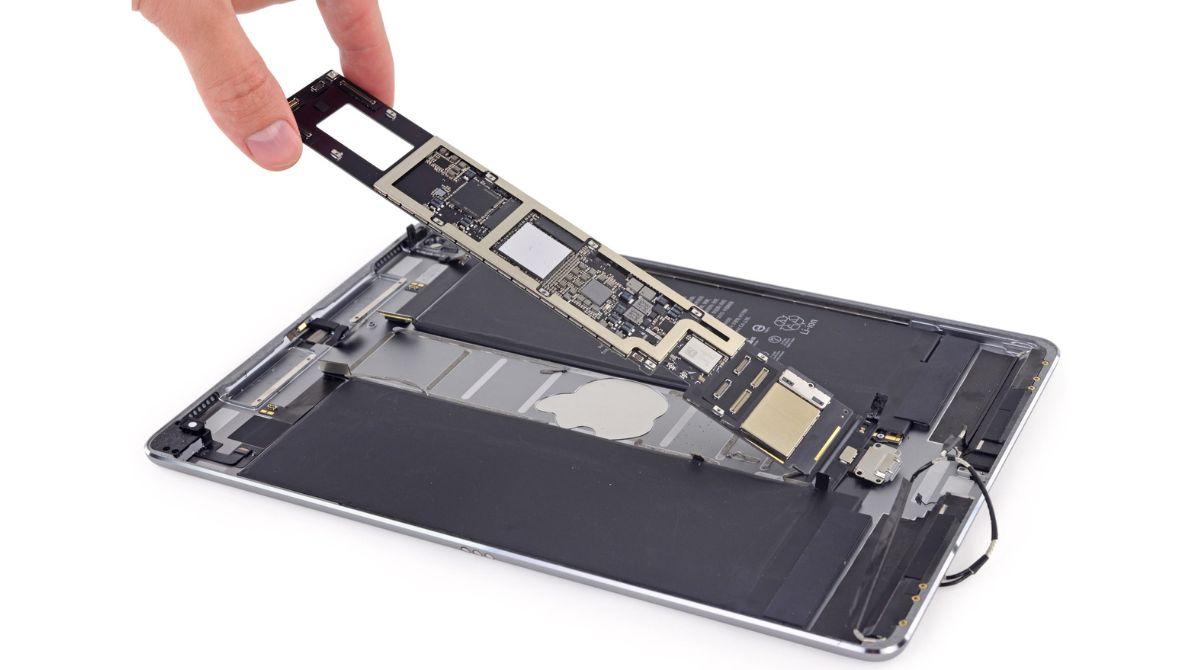Introduction
The iPad Air, renowned for its sleek design and impressive performance, is often a top choice for many technology enthusiasts. However, when it comes to technical specifications, one important factor that often comes into question is the amount of RAM that the iPad Air possesses. RAM, or Random Access Memory, plays a crucial role in the overall performance and multitasking capabilities of a device. In this article, we will delve into the question of how much RAM the iPad Air actually has and discuss its implications for users.
RAM is a form of temporary storage that allows your device to quickly access and process data. It is responsible for managing the active tasks and storing temporary information required for smooth multitasking. The more RAM a device has, the better it can handle multiple applications running simultaneously and switch between them seamlessly.
Now, let’s uncover the RAM specifications of the iPad Air. The current generation of iPad Air, released in 2020, comes with a generous 4GB of RAM. This is a significant upgrade from its predecessors, offering improved processing power and the ability to handle resource-intensive tasks with ease. With 4GB of RAM, the iPad Air can handle demanding apps, multitasking, and even graphic-intensive tasks such as gaming and video editing without compromising on performance.
When comparing the RAM capacity of the iPad Air to other iPad models, it becomes clear that the iPad Air sits in the middle of the lineup. The entry-level iPad, for example, typically comes with 2GB of RAM, while the top-tier iPad Pro models offer up to 6GB or even 8GB of RAM, depending on the configuration. This places the iPad Air in a sweet spot, providing ample memory capacity for most users’ needs, while still being more affordable than the iPad Pro models.
Determining the amount of RAM you need for your iPad Air largely depends on your usage patterns and requirements. For casual users who primarily use their iPad for web browsing, social media, and light productivity tasks, 4GB of RAM is more than sufficient. It allows for smooth app switching and ensures a responsive experience. However, if you’re a power user who regularly engages in resource-demanding tasks like editing large files, running multiple intensive apps simultaneously, or creating complex designs, you may benefit from the additional RAM offered by the iPad Pro models.
Having more RAM in your iPad Air offers several advantages. First and foremost, it improves the overall performance of your device, enabling faster app loading times, smoother multitasking, and efficient memory management. It also enhances the capabilities of resource-demanding apps, allowing them to run more smoothly and without any lag. Additionally, more RAM enables your device to operate efficiently even when multiple apps are running in the background, ensuring a seamless user experience.
It’s important to note that iOS, the operating system that powers the iPad Air, has excellent memory management capabilities. It efficiently manages RAM allocation and ensures that the system remains stable even with limited memory resources. This means that even if your iPad Air has less RAM compared to other devices, iOS effectively optimizes the available memory to deliver a smooth and responsive performance.
RAM Basics
Before diving into the specifics of RAM in the iPad Air, let’s take a moment to understand the basics of RAM. RAM, or Random Access Memory, is a type of volatile memory that stores data and instructions that are actively being used by a computer or electronic device. It is a crucial component in determining the performance and multitasking capabilities of a device.
Unlike permanent storage such as a hard drive or solid-state drive, RAM is temporary and volatile, meaning that its contents are lost when the device is powered off or restarted. The importance of RAM lies in its fast and efficient access to data. When you open an application or load a file, it gets transferred from the storage to the RAM, allowing the processor to quickly access and process the information. The more RAM a device has, the more data it can store and access at the same time, resulting in smoother multitasking and faster performance.
RAM acts as a bridge between the processor and other hardware components. It holds the data that the processor needs to perform tasks and executes instructions on them. When you open multiple applications or perform intensive tasks like video editing or gaming, RAM ensures that the device can smoothly switch between tasks without experiencing delays or slowdowns.
It’s important to note that RAM works in conjunction with the device’s operating system and other components, such as the processor and storage. While RAM stores the actively used data, the storage holds the long-term data and files, including the operating system and installed applications. The processor, on the other hand, executes the instructions and processes the data stored in the RAM.
RAM capacity is measured in gigabytes (GB) and typically ranges from 2GB to 16GB or even higher in high-end devices. The amount of RAM needed depends on the device’s intended usage and the complexity of the tasks it will handle. Devices with larger RAM capacities are better suited for demanding tasks like graphic design, video editing, and gaming. However, for most everyday tasks such as web browsing, email, and word processing, devices with smaller RAM capacities can still provide a smooth and responsive experience.
In summary, RAM is a vital component of a device’s performance, enabling seamless multitasking and efficient data processing. It acts as a temporary storage for active data and instructions, allowing the processor to quickly access and process them. The amount of RAM a device has plays a significant role in determining its multitasking capabilities and overall responsiveness. In the next section, we will explore the specific RAM specifications of the iPad Air and how it compares to other iPad models.
iPad Air RAM Specifications
When it comes to the RAM capacity of the iPad Air, the 2020 generation offers users a considerable amount of memory to work with. The iPad Air is equipped with 4GB of RAM, which is double the amount found in the entry-level iPad model. This upgrade in RAM capacity allows the iPad Air to handle a wide range of tasks and applications without sacrificing performance or responsiveness.
With 4GB of RAM, the iPad Air can easily handle everyday tasks such as web browsing, email, and document editing. It provides a smooth and responsive user experience, allowing for seamless app switching and multitasking. Additionally, the iPad Air’s RAM capacity is sufficient to handle more resource-demanding tasks such as video streaming, gaming, and even graphic design work.
While the iPad Air’s RAM capacity may not match that of the top-tier iPad Pro models, it strikes a balance between performance and affordability. The iPad Pro models, particularly the higher-end configurations, offer up to 6GB or 8GB of RAM, which can be beneficial for power users who require extensive multitasking, video editing, or running complex productivity apps. However, for the majority of users, the 4GB of RAM in the iPad Air provides an excellent balance of performance and value.
It’s worth noting that iOS, the operating system that powers the iPad Air, is optimized to efficiently manage RAM usage. This means that even though the iPad Air has a lower RAM capacity compared to the iPad Pro models, the operating system is designed to maximize performance and ensure smooth operation. iOS intelligently allocates memory to active tasks and deallocates memory from idle or less important processes, optimizing the performance of the device.
Overall, the 4GB of RAM in the iPad Air is more than sufficient for the majority of users. It allows for efficient multitasking, smooth app performance, and the ability to handle resource-demanding tasks without any noticeable lag or slowdowns. Whether you’re a casual user or a power user, the iPad Air’s RAM specifications provide a solid foundation for a seamless and enjoyable user experience.
Comparing iPad Air RAM to Other Models
When considering the RAM capacity of the iPad Air, it’s helpful to compare it to other models in the iPad lineup. The entry-level iPad, for instance, typically features 2GB of RAM, whereas the top-tier iPad Pro models can offer up to 6GB or 8GB of RAM, depending on the configuration.
With its 4GB RAM, the iPad Air sits comfortably between the entry-level iPad and the high-end iPad Pro models. This makes it an attractive choice for users who want a balance of performance and affordability. While the iPad Pro models provide a higher RAM capacity for heavy multitasking and demanding tasks, the iPad Air’s 4GB RAM is more than sufficient for everyday use and even some resource-intensive applications.
For casual users who primarily use their iPad for web browsing, email, social media, and light productivity tasks, the iPad Air’s 4GB RAM provides a smooth and responsive experience. It offers ample memory capacity for seamlessly switching between apps and handling multimedia content, such as streaming videos or browsing image-heavy websites.
On the other hand, power users who engage in activities like video editing, running multiple intensive apps simultaneously, or creating complex designs may benefit from the higher RAM capacity offered by the iPad Pro models. For instance, the increased RAM allows for smoother editing and rendering of high-resolution videos, faster processing of large files, and enhanced performance with complex applications.
It’s important to consider your individual requirements and usage patterns when determining the RAM capacity you need. While more RAM can offer benefits in terms of multitasking and performance, it may not be necessary for all users. The iPad Air strikes a sweet spot for the majority of users, providing an excellent balance of performance and value with its 4GB RAM.
Furthermore, it’s worth mentioning that RAM is only one aspect of a device’s overall performance. Factors like the processor, storage type, and optimization of the operating system also contribute significantly to the overall user experience. The iPad Air, with its powerful A14 Bionic chip and optimized iOS, delivers impressive performance even with its 4GB RAM.
In summary, when comparing the RAM capacity of the iPad Air to other iPad models, it becomes apparent that the iPad Air offers a competitive and versatile amount of memory. With its 4GB RAM, it strikes a balance between performance and affordability, catering well to the needs of most users. Whether you’re a casual user or a power user, the iPad Air provides a solid and reliable performance that can handle a wide range of tasks and applications.
How Much RAM Do You Need?
Determining the optimal amount of RAM you need for your iPad Air depends on your specific requirements and usage patterns. While more RAM generally allows for better multitasking and smoother performance, it may not be necessary for everyone.
For casual users who primarily engage in light tasks such as web browsing, email, social media, and word processing, the 4GB of RAM in the iPad Air is more than sufficient. It provides a seamless experience for everyday use, ensuring smooth app switching, responsive performance, and efficient memory management.
If you often use resource-intensive apps like video editing software, 3D graphic design programs, or advanced gaming applications, you may benefit from a higher RAM capacity. These types of applications require more memory to handle large files, process complex graphics, and perform real-time rendering. In such cases, the iPad Pro models with their larger RAM capacities, such as 6GB or even 8GB, offer an advantage, allowing for smoother operation and improved performance.
Another factor to consider when determining the amount of RAM you need is the longevity of your device. If you plan to keep your iPad Air for several years, opting for a higher RAM capacity may help future-proof your device. As newer versions of applications and operating systems are released, they often require more resources to run optimally. Having a higher RAM capacity can ensure that your device remains capable and responsive as new software updates are introduced.
Additionally, if you frequently engage in multitasking, running multiple applications simultaneously, or keeping numerous tabs open in your web browser, more RAM can enhance your productivity. It enables smoother switching between applications without experiencing delays or slowdowns, ensuring a seamless workflow.
Ultimately, the decision on how much RAM you need for your iPad Air is subjective and dependent on your specific requirements. Assessing your usage patterns, considering the types of tasks and applications you use regularly, and projecting the longevity of your device are crucial factors in determining the optimal RAM capacity.
It’s important to note that the iPad Air, with its 4GB of RAM, offers a versatile and reliable performance for the majority of users. It strikes a balance between performance and affordability, providing ample memory capacity for most tasks. Whether you’re a casual user, a creative professional, or a power user, the iPad Air can handle a wide range of applications and deliver a satisfying user experience.
Benefits of More RAM in iPad Air
Having more RAM in your iPad Air can offer several benefits that enhance its overall performance and user experience. While the iPad Air comes with a commendable 4GB of RAM, opting for a device with a higher RAM capacity, such as the iPad Pro models, can provide additional advantages for certain users.
1. Improved Multitasking: More RAM allows for better multitasking capabilities. With larger RAM capacity, you can run multiple apps simultaneously without experiencing lag or slowdowns. This is especially beneficial for power users who often switch between resource-intensive applications or frequently work with multiple applications open at the same time.
2. Efficient Handling of Resource-Intensive Tasks: RAM plays a crucial role in handling resource-demanding tasks like video editing, graphic design, and advanced gaming. More RAM enables smoother rendering, faster processing of large files, and efficient management of complex graphics, resulting in a more seamless and enjoyable experience.
3. Improved App Performance: With more RAM, apps can load faster and operate more smoothly. The additional memory allows for quicker data retrieval and temporary storage of app-related information, ensuring smooth navigation and responsiveness.
4. Enhanced Multimedia Experience: Whether you’re streaming high-quality videos, editing high-resolution photos, or playing graphics-intensive games, more RAM helps deliver a smoother and more immersive multimedia experience. It ensures that your device can handle the data processing requirements without any performance hiccups.
5. Future-Proofing: Investing in a device with a higher RAM capacity can help future-proof your iPad Air. As technology advances and software updates become more resource-intensive, having more RAM ensures that your device remains capable of handling the demands of newer applications and operating systems.
6. Efficient RAM Management: While more RAM is beneficial, it’s important to note that the iOS operating system is highly optimized for memory management. iOS intelligently allocates memory resources based on the active tasks, effectively utilizing available RAM and ensuring smooth operation even with limited resources.
It’s essential to consider your specific needs and usage patterns when determining whether you require more RAM in your iPad Air. While the 4GB RAM in the iPad Air is sufficient for most users, power users or those engaging in resource-intensive tasks may benefit from the additional RAM offered by the iPad Pro models. However, for the majority of users, the iPad Air’s RAM capacity provides a solid foundation for a smooth and seamless user experience.
Understanding the RAM Management in iOS
RAM management is a crucial aspect of optimizing the performance and efficiency of a device. In the case of the iPad Air, understanding how iOS manages RAM can provide valuable insights into its operation and performance.
iOS, the operating system that powers the iPad Air, is designed with efficient memory management in mind. It employs various techniques to ensure that RAM resources are allocated and utilized effectively, providing a smooth and responsive user experience.
1. App De-prioritization: iOS intelligently identifies and de-prioritizes inactive or background apps. When an app is not actively being used, iOS reduces its priority for RAM resources, freeing up more memory for active or foreground apps. This ensures that the RAM is allocated to the applications that are currently being used, optimizing performance and responsiveness.
2. App State Preservation: iOS has the capability to save the state of an app when it is switched to the background. This includes saving the app’s current state, data, and any relevant information. By preserving the app’s state, iOS can efficiently reclaim the memory previously occupied by the app, allowing for seamless switching between apps without losing progress or data.
3. Dynamic Memory Management: iOS dynamically manages the allocation of RAM resources based on the existing workload and system demands. It monitors the memory usage of different apps and adjusts the allocation accordingly. This adaptive approach ensures that the available RAM is distributed efficiently among active processes, enhancing overall performance and responsiveness.
4. Memory Compression: iOS utilizes advanced memory compression techniques to optimize the use of RAM. This involves compressing the memory usage of idle or unused apps, reducing their footprint in RAM without compromising their accessibility or responsiveness when they become active again. The compressed memory allows for more efficient use of available RAM resources.
5. Low Memory Handling: iOS is designed to handle situations where available RAM becomes limited. When the device is low on memory, iOS proactively manages and optimizes memory usage to maximize performance and prevent crashes. This can include tasks such as purging unnecessary data, reducing the memory usage of apps, and prioritizing critical system operations.
6. Memory Warnings and App Termination: In extreme cases of low memory, iOS sends memory warnings to applications. This alerts the apps to release any unnecessary resources or clean up their memory usage. If an app fails to respond to these warnings, iOS may terminate it to free up valuable memory resources and maintain system stability.
The RAM management techniques employed by iOS ensure that the iPad Air operates smoothly and optimally, even with limited RAM capacity. The efficient allocation and optimization of memory resources contribute to the device’s overall performance, seamlessly handling multitasking, resource-demanding apps, and providing a responsive user experience.
In summary, iOS in the iPad Air utilizes advanced RAM management techniques to optimize memory allocation and utilization. By intelligently prioritizing active apps, preserving app states, dynamically managing memory, using compression techniques, handling low memory situations, and enforcing memory warnings, iOS ensures efficient resource management and overall system stability.
Conclusion
The iPad Air boasts a generous amount of RAM, providing users with a seamless and responsive experience for a wide range of tasks and applications. With its 4GB RAM capacity, the iPad Air strikes a balance between performance and affordability, making it an excellent choice for most users.
While the iPad Pro models offer higher RAM capacities, such as 6GB or 8GB, the iPad Air’s 4GB RAM is more than sufficient for everyday use and even some resource-intensive tasks. It allows for efficient multitasking, smooth app performance, and the ability to handle demanding apps like video editing software, graphic design programs, and gaming applications.
Furthermore, the iOS operating system manages RAM efficiently, ensuring that resources are allocated and utilized optimally. iOS employs various techniques such as app de-prioritization, app state preservation, dynamic memory management, memory compression, low memory handling, and memory warnings to enhance performance and system stability.
Determining the optimal amount of RAM you need for your iPad Air depends on your specific requirements and usage patterns. Casual users will find the 4GB RAM to be more than sufficient for everyday tasks, while power users or those engaging in resource-demanding activities may benefit from the higher RAM capacities offered by the iPad Pro models.
Ultimately, the iPad Air with its impressive RAM capacity delivers a smooth and enjoyable user experience. With its sleek design, powerful performance, and versatile capabilities, the iPad Air continues to be a popular choice for technology enthusiasts and casual users alike.
Whether you’re browsing the web, tackling productivity tasks, enjoying multimedia content, or engaging in creative endeavors, the iPad Air’s RAM capacity ensures that your device can handle your needs with ease. So, whether you choose the iPad Air or explore the iPad Pro models, you can rest assured knowing that you have a device capable of delivering an exceptional user experience.







